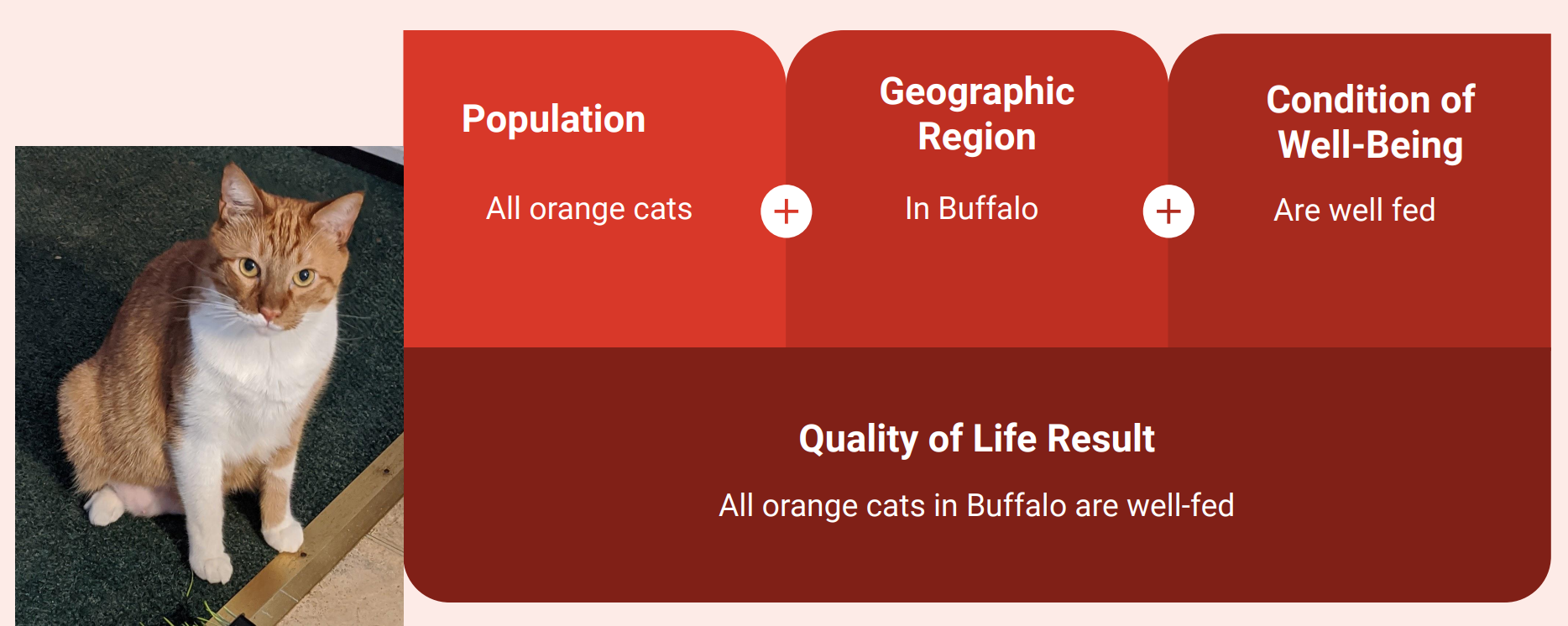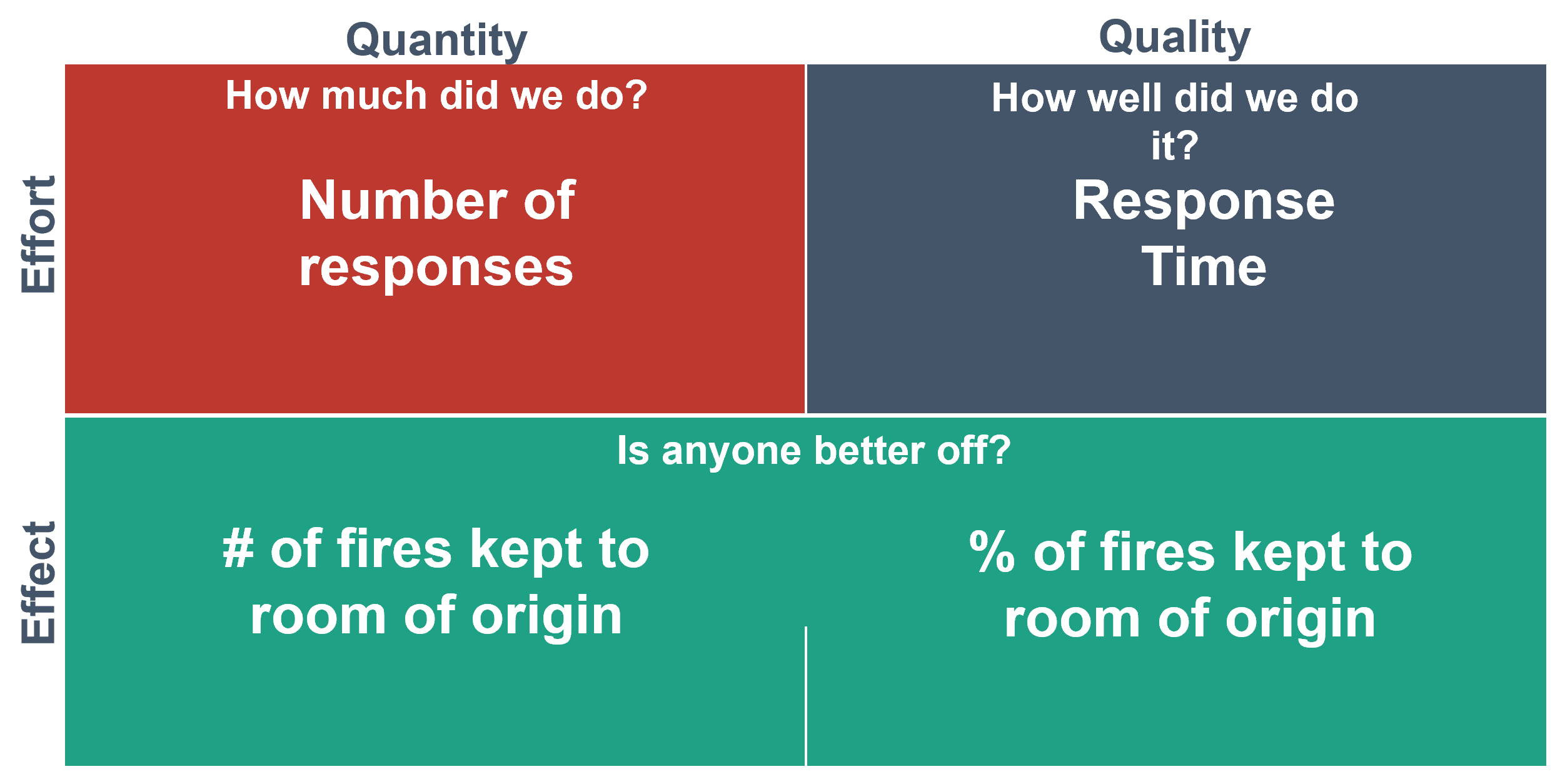This module provides an overview of Results-Based Accountability (RBA) as a strategy for tracking and monitoring the programs and services developed using design thinking.
RBA is a framework for how we think about making change and improving the lives of the people we serve. We use RBA for quality improvement and understanding our impact.
It is important to remember that performance measures aren’t “one size fits all,” and should represent the key activities and outcomes of a specific program or service.
RBA prioritizes getting the best possible outcomes for the community, and is another tool to help obtain feedback so that you can improve your programs and services.
RBA Performance Measurement Framework
Quality of Life Result
[Population] + [geographic region] + [condition of well-being]
Use simple language
Avoid referencing data or “improvement”
Avoid referencing services or programs--those are the means, the way that you will get to the result, not the result itself.
Examples of QOL results might include:
All people in Oswego County have safe housing
All babies in Wellsville are born healthy
A Fun Example of a Quality of Life Result
Performance Measures
Performance measures are way of capturing the effort put in to delivering a program/service, as well the effect of the program on the people being served.
How much service did we deliver? (#)
How well did we deliver it? (%)
How much change did we produce? (#)
What quality of change did we produce? (%)
Performance measures give you the means to know how well your team is doing at providing services and improving those lives.
A good performance measure will give you the ability to make changes and see whether those changes improve performance (the ability to improve customers/clients’ quality of life).
RBA Performance Measurement Framework
All performance measures fit into one of four categories. The categories, the four quadrants, are derived from the intersection of quantity and quality and effort and effect.
Selecting Performance Measures
Communication Power - Does the performance measure communicate to a broad range of audiences?
Proxy Power - Sometimes referred to as “Importance Power”. Does the performance measure say something of central importance about the program? Does the performance measure bring along the data herd?
Data Power - Is quality data available on a timely basis?
Why do we use RBA?
RBA improves the lives of children, families, and communities and the performance of programs because RBA:
Gets from talk to action quickly
Is a simple, common sense process that everyone can understand
Helps groups to surface and challenge assumptions that can be barriers to innovation
Builds collaboration and consensus
Uses data and transparency to ensure accountability for both the well being of children, families and communities.





